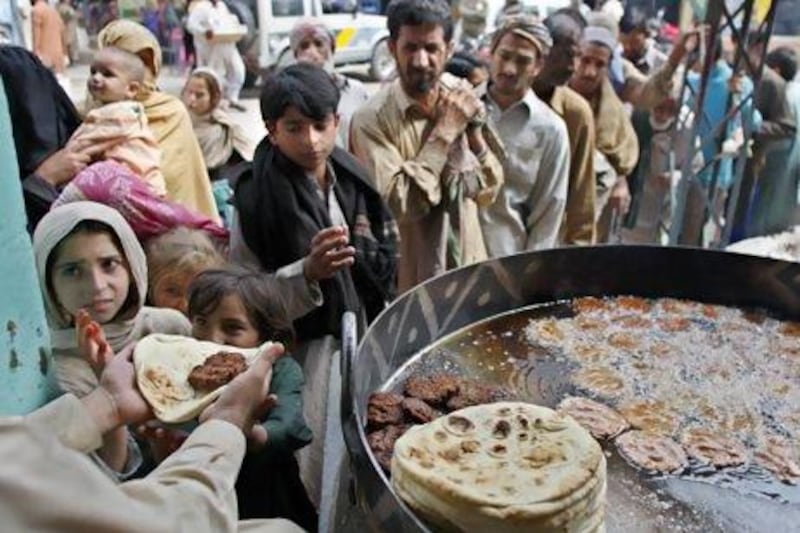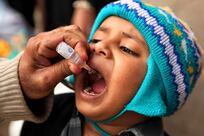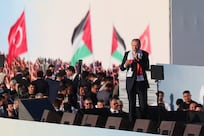Most of the fighting between Pakistani troops and the Pashtun Taliban has been in the Federally Administered Tribal Areas. But the less-reported aspect of recent developments in Pakistan is the endemic radicalisation of Pakistan's Punjab province.
The continuing mobilisation of Punjabi militants - the so-called "Punjabi Taliban" - is just one way that this growing extremism is becoming evident.
Punjab is vital: almost half of Pakistan's 182 million people live in the province. About 44 per cent of Pakistan's 20,000 madrassas are there. Of the 1,764 people on government "wanted" lists, 729 are from southern Punjab alone.
To be sure, Punjab is nothing like the "lawless badlands" of the tribal areas. It is considered by many to be Pakistan's most progressive province, and boasts a number of cities that are well-established metropolitan centres of modernity and liberalism. At the same time, there is another Punjab - the rural south and some adjoining urban centres - that have traditionally been the nursery for militant organisations such as Sipah Sahaba Pakistan and Jaish-i-Muhammad.
Punjabi radicalisation is not a new phenomenon; Punjabis have for long been a part of militant organisations, and after September 11 many mobilised to help their Pashtun brethren in Afghanistan. Today, many policy analysts in Khyber Pakhtunkhwa province are more worried about Punjabi militants than the indigenous Pashtun, partly because the Punjabis are less predictable.
One can almost discern a socio-economic pattern in the radicalisation in Punjab. Among lower-income groups, particularly in southern Punjab, gross inequalities and social injustice are exploited by numerous madrassas and networks of sectarian and militant groups.
For instance, the militant Sipah Sahaba Pakistan set up 75 district-level branches and 225 smaller units in the days before the group was banned in 2002. It is still active under changing names, and by all accounts it is growing. Other groups have varying levels of entrenchment in the area.
Radicalisation is unevenly distributed in central and northern Punjab. However, madrassas everywhere are fertile grounds for idealistic extremism.
Other main drivers of radicalisation in semiurban or urban parts of Punjab are misplaced notions of jihad and a deep mistrust of the West. Militant groups tend to concentrate on colleges and universities, and middle-income groups such as lawyers, traders and doctors.
Growing alienation from society may drive upper and middle-class Punjabis to find solace with entities such as Hizb-ut-Tahrir, which aims to indoctrinate opinion leaders. Another group, Al Huda, which focuses on women, is fast becoming a fad in the upper crust of society. These organisations espouse "bringing Muslims back to their roots", an ideal that resonates among the educated elite.
Punjabi extremism is a volatile mix. Grinding poverty, corruption, extremist seminaries and socio-economic inequalities are a recipe for disaster.
More people live below the poverty line in southern and western Punjab than in Sindh, Balochistan and Khyber Pakhtunkhwa provinces combined. That may help explain why southern Punjab villages are now seeing incidents eerily like events that happened when the Taliban were taking over territories in FATA and Swat: extremists demanding Islamic law, denouncing the government as incompetent and corrupt, banning video and music shops, and encouraging an Islamic revolution.
Moreover, the borders of south Punjab share certain topographical features with tribal areas, so that militants can filter in, even if entry points from Khyber Pakhtunkhwa are monitored.
Dera Ghazi Khan, the largest district in Punjab, is a gateway between central Punjab and Khyber Pakhtunkhwa and Balochistan. Militant Punjabi groups have recruited from there regularly for the war against the United States and Nato in Afghanistan.
The Taliban's influence has also steadily increased in the huge Bahawalpur district, through their allied group Jaish-i-Muhammad. Bahawalpur was already home to up to 20,000 trained Punjabi militants, operating under cover of charity organisations or private schools and media outlets after a broad ban of militant groups by the former president, Gen Pervez Musharraf.
Radicalisation of the Punjab has affected the pattern of terrorism in Pakistan. Attacks by distinct Punjabi entities were a rarity before 2008; this has now changed drastically.
As the government has stepped up counterinsurgency work in Swat and FATA, the Taliban have become more active in Punjab, just as home-grown radicalisation was growing. Together, these events suggest that for the foreseeable future Punjabi extremism may remain a force to be reckoned with, along with Pashtun-driven militancy.
Manzar Zaidi is a security analyst and academic whose most recent book, Insights into Pakistan's Insecurity, was published in June.





